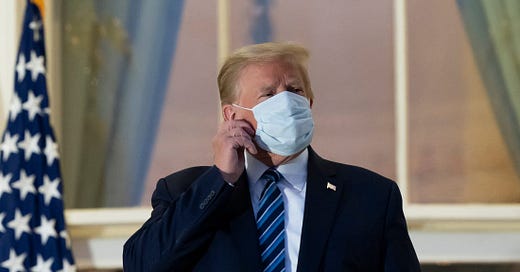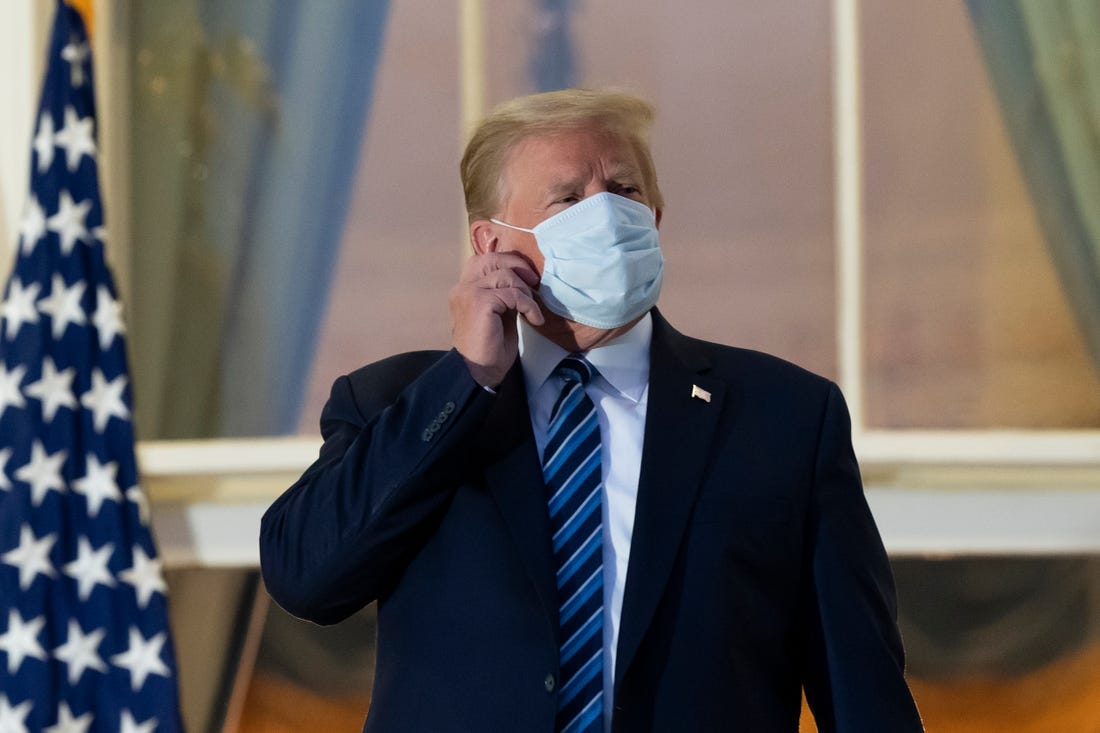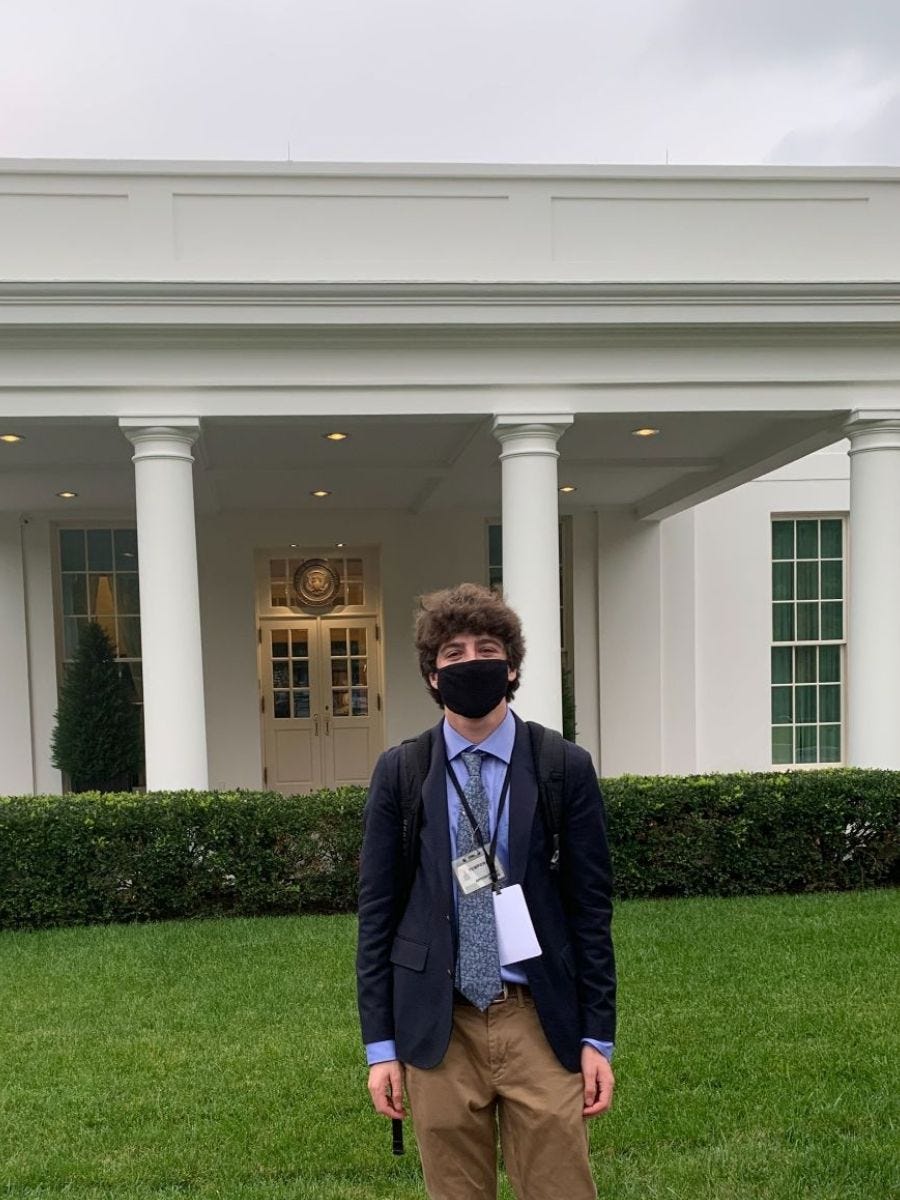It’s Wednesday, October 7, 2020. Election Day is 27 days away. The vice presidential debate is tonight. Have questions, comments, or tips? Email me.
Inside today’s newsletter: A preview of the VP debate, plus my “Reporter’s Notebook” piece reflecting on what it was like to be at the Rose Garden event that led to a White House coronavirus cluster.
Reminder: Listen to the latest Wake Up To Politics podcast episode, “Inside the Judicial Wars.”
Pence, Harris face off in VP showdown
It is always said that vice presidents are “one heartbeat away from the presidency.” But in an election year where both presidential candidates are in their seventies — and one is still recovering from a deadly virus — that aphorism may ring truer than ever in 2020.
Vice President Mike Pence and California Sen. Kamala Harris will face off in their first and only debate tonight, an event that would normally be overlooked but is taking on new importance as both running mates face the stark reality of presidential mortality.
President Donald Trump’s coronavirus diagnosis — and his administration’s broader handling of the pandemic — are likely to shadow much of tonight’s debate. Pence has chaired the White House coronavirus task force since February; Harris, a former prosecutor, is expected to press him to defend the administration’s response to the outbreak, which has led to more than 200,000 deaths in the United States.
Even the setup of the stage will ensure the pandemic will be indelible in the minds of viewers: plexiglass dividers are being placed between the candidates, who will be seated 12 feet, 3 inches apart. According to the New York Times, Pence’s aides initially resisted adding the dividers but eventually acceded to the request from Harris’ team.
The added safety precautions come amid criticism that President Trump’s family and guests violated Commission on Presidential Debate (CPD) rules by not wearing face masks during last week’s presidential debate in Ohio. White House aides and doctors have also refused to confirm when Trump last tested negative for coronavirus, raising questions about whether he tested at all before the debate, as the CPD required.
Dr. Robert Redfield, director of the Centers for Disease Control and Prevention (CDC), issued a memorandum Tuesday before the VP debate affirming that Pence did not count as a “close contact” of Trump’s after meeting with him in the Oval Office before his diagnosis last week.
Trump has signaled his plans to attend the second presidential debate, on October 15 in Miami — “It will be great!” he tweeted — but Democratic presidential nominee Joe Biden said Tuesday that he will only participate if Trump has fully recovered from the virus. “If he still has Covid, we shouldn’t have a debate,” Biden said.
How to watch: The debate will air from 9 p.m. to 10:30 p.m. on all the major networks and will stream on YouTube. Suan Page, the Washington bureau chief of USA Today, will serve as moderator. The debate will be divided into nine, 10-minute segments on topics selected by Page.
Before you watch: Listen to my podcast episode on presidential and vice presidential debates. Professor Alan Schroeder, a presidential debate scholar, told me in the episode that the Pence/Harris matchup is the one he is most looking forward to this year.
Reporter’s Notebook: Stepping inside Trump’s post-Covid mirage
When I first came to Washington, D.C., in August to cover politics and begin my freshman year of college, I distinctly remember worrying whether it would be safe to dip between the two worlds I was hoping to inhabit, interacting simultaneously with my young peers and elderly politicians.
Would I find myself at gatherings of college students where Covid-19 might be circulating, and then unknowingly carry the virus into the halls of the White House or the Capitol? The last thing I wanted was to become a risk to our nation’s leaders in a time when their health could already be in danger.
As it turns out, they may have posed more of a risk to me than I did to them: indeed, the only superspreader event I’ve attended since I’ve been here was not in a dorm room, but at the White House.
When I arrived there to cover President Trump’s Supreme Court announcement late last month, I was somewhat surprised to discover how few Covid-minded restrictions were in place. I was immediately checked for weapons as I entered the White House complex, but no one checked my temperature. (The president’s staff halted the practice in June.) No one inquired if I was experiencing any Covid symptoms (I wasn’t) or checked to make sure I was wearing a mask (I was). They simply handed me a “day pass” and I strolled right in.
The Rose Garden was lavishly decorated for the ceremony, with American flags draped over the nearby colonnade. The Marine Corps band was playing cheerily. A lifetime appointee to the Supreme Court about to be unveiled, it certainly had the feel of a historic day. And it would be one, but not for the reason any of us would write about.
With the exception of a correspondent from Trump-allied One America News Network, all of the journalists I saw wore their masks for the entirety of the event. Almost none of the guests did. I noted this fact, on Twitter and in my newsletter recapping the event. But it certainly wasn’t my headline, nor was it the leading feature in any other major news accounts of the ceremony. The White House insisted that all of the guests had been screened — by a faulty test, it turned out — and the gathering posed no risks.
From behind a rope and stanchion, my colleagues and I in the press section watched as guests hugged and shook hands, pandemic be damned. We worked together to scour the crowd for guests we could identify, so we could name the more noteworthy attendees in our reports. (The fruit of our efforts would later take on importance as a starting point for amateur contact tracers.) But it wasn’t until days later that any of us wrote at length about the dangerous behavior that had played out before our eyes.
Looking back, we were temporarily lured into the post-Covid mirage Trump was attempting to project. We shouted questions at (unmasked) White House aides about the Supreme Court appointment, but failed to press them about the lack of safety precautions. That was partly the point of the event, after all: to act as though the pandemic had passed, to divert our attention elsewhere.
By too easily allowing our focus to drift, it is now glaringly obvious that we in the press — unknowingly standing in a Covid hotspot — missed the day’s real story entirely.
Trump’s mirage, of course, came crashing down a few days later. The president, his wife, and many of his political allies were soon diagnosed with coronavirus, and the Rose Garden event was quickly identified as the likely origin. (Fifteen attendees and counting have since tested positive.) Washington was shaken as an ailing President Trump was brought to Walter Reed hospital to recuperate. Meanwhile, I rushed to a nearby clinic and got a Covid test, as fast as I possibly could.
My test came back negative on Tuesday, which I am grateful for. But some of my colleagues in the press corps weren’t as lucky, nor were some White House residence staffers and military aides. In fact, positive tests are spiking across the capital: On Monday, Washington, D.C., recorded its highest level of new coronavirus cases in more than four months.
Yet, the mirage persists inside 1600 Pennsylvania Avenue, even as a growing number of its employees join the ranks of the 7.5 million infected Americans. President Trump quickly peeled off his mask after returning to the White House from Walter Reed on Sunday. “Don’t be afraid of it,” he said of the virus in a video message released on Twitter.
Outside the White House gates, however, grim realities of both public health and politics suggest Trump may have much to be fearful of.
Stimulus talks: “President Donald Trump reversed course Tuesday night and urged Congress to approve a series of coronavirus relief measures that he would sign, including a new round of $1,200 stimulus checks for Americans.”
“Earlier in the day, he had halted talks between top Democrats and Republicans until ‘after I win’ the election, which appeared to have killed the chances of a new package. Both moves by the president, who was released Monday from the hospital where he was being treated for Covid-19, were made on Twitter.” (NBC News)
Coronavirus: “The White House cast aside its objections and endorsed the U.S. Food and Drug Administration’s plans for assessing whether a Covid-19 vaccine should be given to the public, making it likely that a shot won’t be cleared until after the election, people familiar with the matter said.” (Wall Street Journal)
President Trump lashed out at the guidelines on Twitter hours after the White House approved them, tagging his FDA Commissioner and accusing the agency of a “political hit job.”
White House senior adviser Stephen Miller tested positive for Covid-19 on Tuesday, becoming the latest top Trump aide to contract the virus.
The Rundown
Daybook
All times Eastern.
President Donald Trump has no public events scheduled.
Democratic presidential nominee Joe Biden will attend virtual fundraisers.
Vice President Mike Pence and Democratic vice presidential nominee Kamala Harris will participate in the vice presidential debate at 9 p.m. at the University of Utah in Salt Lake City, Utah.
The House and Senate are not in session.
The Supreme Court will hear oral arguments in two cases:
Google v. Oracle America: There are two main questions in this case, which has been dubbed “the copyright lawsuit of the decade”: whether software interfaces can be copyrighted, and whether it’s permissible for someone to use a copyrighted software interface to create a new computer program. Google is being sued for using an interface written by an Oracle affiliate to create Android.
Ford Motor Company v. Montana Eighth Judicial District Court: The court will also hear a complex case about when it’s permissible for a plaintiff to sue someone who lives outside of their state.
Supreme Court case summaries contributed by Anna Salvatore.
Thanks for reading! If you enjoy Wake Up To Politics, please consider donating to support me and my work, listening to my podcast with St. Louis Public Radio, and spreading the word about the newsletter to your friends and family. If this newsletter was forwarded to you, go to wakeuptopolitics.com to subscribe and learn more.






